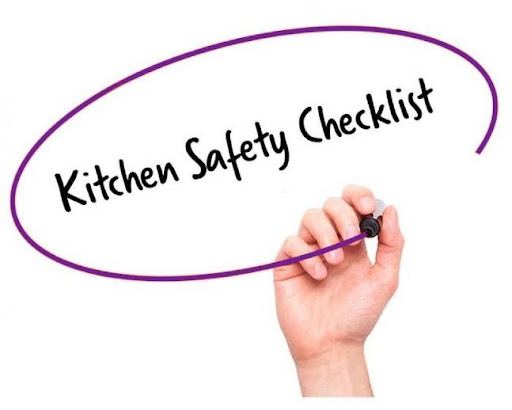
I was interviewed by Epicurious cooking magazine in response to an article I did on Kitchen Safety for People with Parkinson’s. (Scroll down to see the Epicurious article.)
Here is my original article with a few updates:
Being creative in the kitchen is important to so many people with Parkinson’s. Meal prep can be exhausting, challenging and dangerous. Let’s make it as safe and easy as possible so you can keep cooking for the people you love.
Because of tremors and balance issues, the risk of having a kitchen accident is greater for people with PD.
Here are my favorite kitchen ideas used by occupational therapists and tested in the kitchens of my fighters and dancers with Parkinson’s.
- Organize your kitchen
- Accessibility prevents accidents and conserves energy. Keep the equipment you use often on an easy-to-reach shelf. Appliances and light-weight pans should be stored at waist height. This will help prevent falls by reaching too high or bending over and getting light-headed.
- If you are safe to use a step stool, be sure that it is an extra-wide step stool with a handrail and a non-skid rubber platform.

- Keep knives in a block rather than in a drawer.
- Limit glass bowls and glasses, but if you do break a glass, use a broom or towel (not your bare hands) to clean it up.
- Avoid using throw rugs in the kitchen to minimize tripping.
- Our furry family members who love to catch the food we drop unfortunately create a huge tripping hazard, so pets should not be in the kitchen during meal prep time.
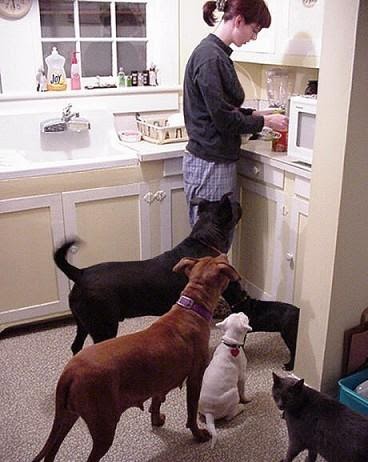
- Have plenty of good lighting all around so you don’t have to move to another spot to read a label or recipe.
- Have a first aid kit and fire extinguisher (ABC Rated) nearby in case of an accident.
- Energy efficiency
- If you need to chop your ingredients, do it earlier when you have more energy. You don’t have to chop food at the same time that you cook. If your cooking time seems to take forever, this is a great strategy my lady fighters use to prepare a meal.
- You can opt for pre-sliced mushrooms/vegetables if you have problems slicing or ask for help from your family if that’s possible.
- Use appliances that are time and energy savers.
- Try to plan your meal prep or cooking during your “on” period if you are on Sinemet (carbidopa/levodopa).
- Moving safely around your kitchen
- People commonly fall when turning in the kitchen because they are in a hurry or thinking of something they need to do. Take your time. Every time you turn, pause and then slowly turn, keeping your feet away from each other. Always turn with the foot closest to the direction you are turning. If you are turning right, move your right foot first. Remember: moving slowly with intention saves time in the long run.
- If you feel wobbly on a certain day, sit to chop, or place a stable walker (no wheels) in front of you to use as guard rails. It’s just there to hang onto in case you get off balance or need extra stability. Use it even for kneeling or reaching down.
- Do not talk or watch TV while you are cutting anything. Pay attention to your work.
- Never try to catch a falling knife. Pick up a knife by its handle, not by its blade.
- Never put a knife in a sink or under water where it is not visible. Clean and sanitize your knife right after use and place it in a visible place.
- Products to help keep you safe
- Six months ago, I hastily sliced into an avocado (forgetting we just sharpened our knives) and severed a nerve in my finger and I still don’t have normal use of it. Lesson learned. I had several people give me a Good Grips 3-in-1 Avocado Slicer. How did I not know about this amazing gadget?
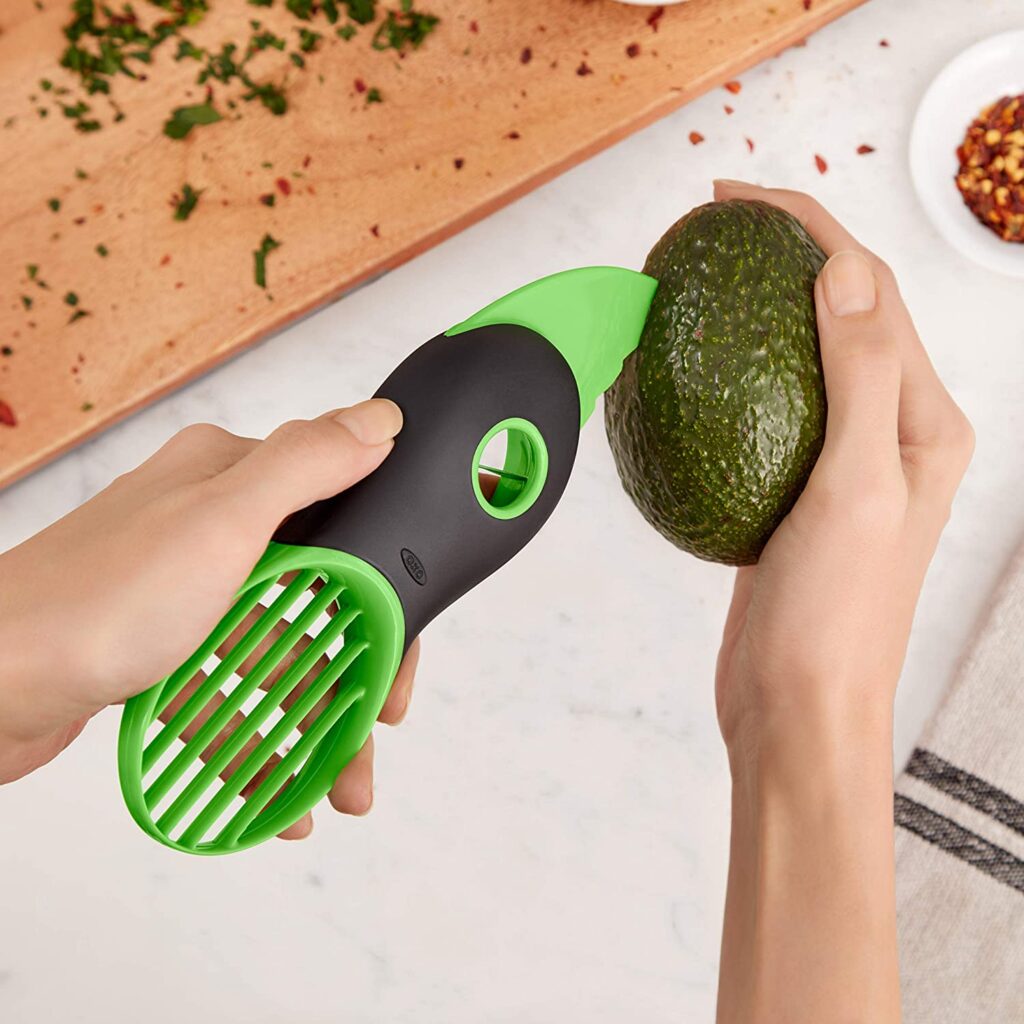
- Use cut-resistant gloves, especially if you are also on a blood thinner. Cut-resistant gloves are relatively inexpensive (approximately $20 a pair). Many of my fighters use these.
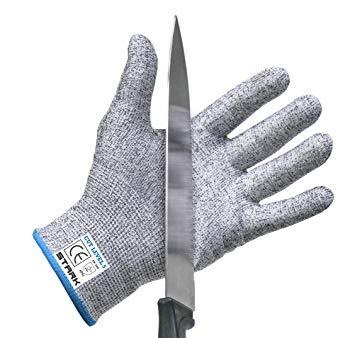
- You may want to use a hard plastic or metal knife guard when cutting.
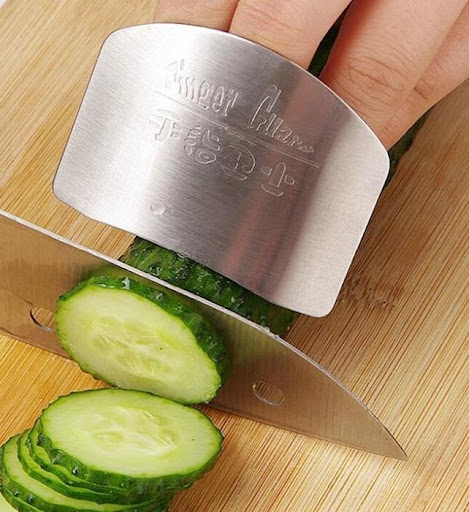
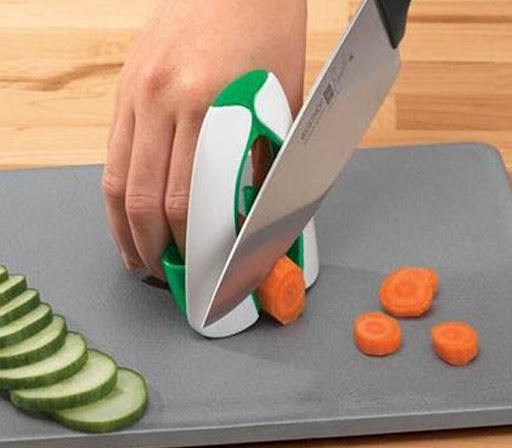
- Kitchen mandolins should only be used with a food pusher or safety guard. Seriously! I’ve sliced a knuckle badly. Be sure to invest in a good one.
- You can buy safety grips for your knife handles, non-slip adhesive strips or just simply wrap a rubber band around the handle to make it easier to grip.
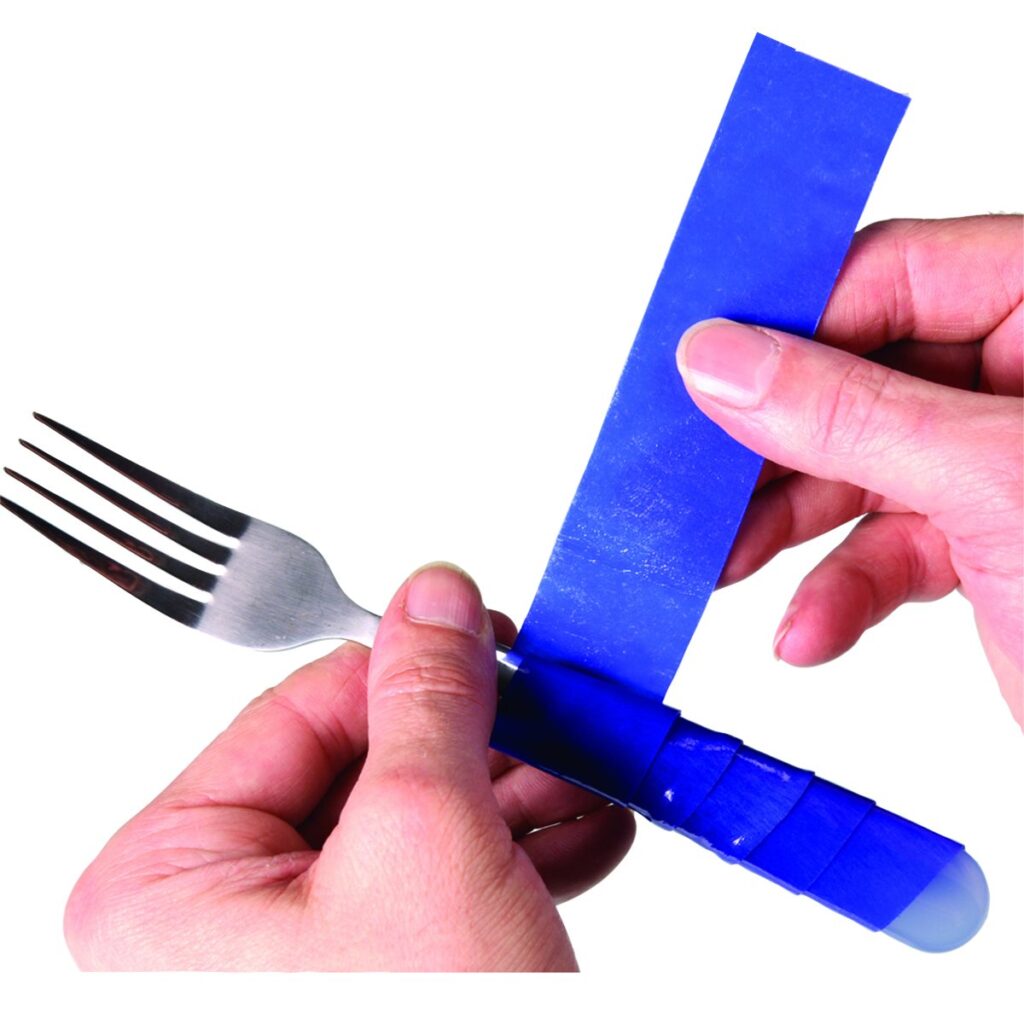
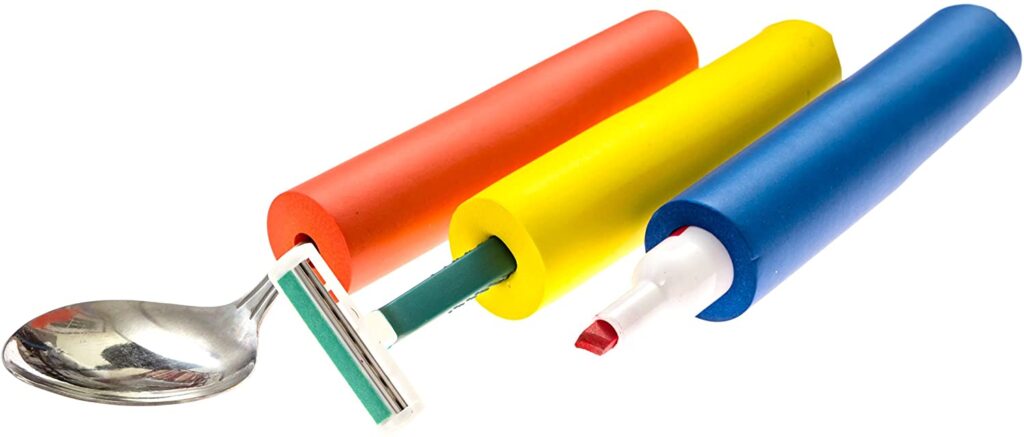
- Use a “secure” cutting board at a good height for cutting.
- Use heat-resistant covers for pan handles. You can even get extra-long oven mitts to cover more of your arm.
These may seem like common sense rules, but there are so many stories out there of people “cutting” corners and winding up in the emergency room. Be safe and enjoy your dinner!

P.S. Check out the Epicurious article here: A Food Lover’s Guide to Cooking with Parkinson’s.
Ready to take back your fight?
Contact me to get started in Kimberly Berg’s Rebel Fit Club Parkinson’s Boxing classes today. We have online workouts, too!
Subscribe now to get more tips and exercises for Parkinson’s delivered right to your inbox!